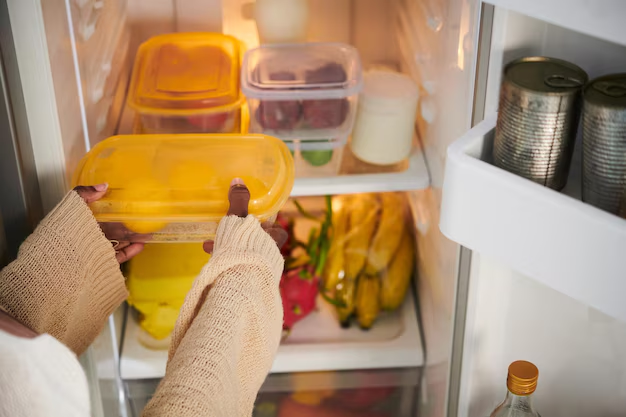Your Ultimate Guide to Stocking a Refrigerator: What Belongs Inside?
Feeling lost in the aisles of your local grocery store? Wondering what should make the cut to earn a spot in your refrigerator? You're not alone. Deciding what to put in your refrigerator involves more than just tossing in a mix of ingredients. It's about planning, practicality, and ensuring you have what you need to whip up delicious meals without waste. In this guide, we'll explore the essentials every fridge should have, with practical insights to make the most of your grocery haul.
🥦 Fresh Produce: The Cornerstone of a Healthy Fridge
Fresh fruits and vegetables are not just vital for a balanced diet; they're an essential part of any well-stocked refrigerator. Let's break it down further.
Benefits of Stocking Fresh Produce
- Health and Nutrition: Loaded with vitamins, minerals, and antioxidants, fresh produce helps boost your immune system and contributes to overall well-being.
- Versatility: Whether you're making salads, stir-fries, or smoothies, fruits and vegetables offer endless culinary possibilities.
- Freshness: A colorful array of produce can make your refrigerator more inviting and motivate healthy eating habits.
Tips for Storing Fresh Produce
- Leafy Greens: Keep greens like spinach and lettuce in the crisper drawer to maintain humidity, and use perforated bags to allow air circulation.
- Berries and Grapes: Store them unwashed in the refrigerator to prolong their freshness, and rinse just before eating.
- Hard Vegetables: Carrots, potatoes, and beets last longer when stored in a cool, dark section of your refrigerator.
🧀 Dairy and Alternatives: Beyond the Basics
Dairy products and their alternatives provide essential calcium and protein. Here’s how to choose and store them effectively.
Essential Dairy Items
- Milk and Plant-Based Alternatives: From traditional cow's milk to oat or almond milk, ensure you have your choice handy for cereal, coffee, or cooking.
- Cheese Selection: Keep a variety of cheeses—from cheddar to feta—on hand to enhance salads, sandwiches, and pasta dishes.
- Yogurt: An excellent snack or breakfast base, yogurt can also be used in marinades and dressings.
Storage Tips for Dairy
- Shelf Placement: Store milk and other perishable dairy products at the back of the fridge where temperatures are most consistent.
- Cheese Care: Wrap cheese in parchment before storing it in a bag or container to keep it fresh without drying out.
🍗 Meats and Proteins: The Building Blocks of Meals
Having a selection of proteins ensures you have the foundation for many dishes.
Types of Proteins to Store
- Fresh Meats: Chicken, beef, and pork are staples that can be prepared in numerous ways, from grilling to roasting.
- Seafood: Fish and shellfish are excellent lean protein sources; store them in the coldest part of your fridge and use them quickly.
- Plant-Based Options: Consider tofu, tempeh, or legumes if you prefer plant proteins.
Protein Storage Tips
- Pre-portion: Divide meat into meal-sized portions before freezing to make defrosting quicker and easier.
- Hierarchy of Coldness: Store meats on the bottom shelf to prevent dripping onto other foods and maintain optimal freshness.
🍞 Pantry Staples: Fridge Edition
Some pantry items deserve a spot in your refrigerator to improve their shelf life and quality.
Key Staples to Keep in Your Fridge
- Nuts and Seeds: Extend their freshness by preventing oils from going rancid.
- Flour and Whole Grains: Especially important in humid climates, refrigeration prevents spoilage.
- Condiments: Mustards, ketchup, and some salad dressings benefit from being cooled to maintain taste and texture.
🥚 Eggs: The Essential Ingredient
There’s considerable debate on whether eggs belong in the fridge, but most modern guidance suggests they do.
Egg Storage Insights
- Storing Eggs: Keep them in their original carton on a refrigerator shelf rather than the door to maintain a stable temperature.
- Cooking Versatility: Eggs offer protein, act as binding agents, and are the star of many breakfast classics.
Sweet and Savory Treats: A Balanced Offering
Indulging occasionally is part of a balanced lifestyle, and having a few treats on hand is perfectly normal.
Ideal Sweet and Savory Additions
- Chocolate: Store dark and milk chocolate in the fridge if your kitchen is prone to being hot.
- Pickles and Olives: These savory treats are excellent for snacking or adding a tangy element to dishes.
Mindful Storing
- Packaging Matters: Store these items in airtight containers to retain crispness and flavor.
The Never-Fridge List: Foods Best Left Out
Some foods can suffer in the fridge. Here’s a quick summary:
- Bread: Refrigerating can make it stale faster.
- Tomatoes: They lose flavor when chilled.
- Onions and Garlic: Prone to becoming soft or moldy more quickly in a cold, humid environment.
📝 Recap and Practical Tips
To make your refrigerator part of a system that minimizes waste while providing healthy meals, keep these points in mind:
- 🌿 Balance is Key: Stock both fresh and longer-lasting items to ensure a varied diet.
- 🧊 Strategic Storage: Know where the coldest areas are and how different slots can enhance freshness.
- ♻️ Regular Checks: Routinely audit your fridge for expired items to keep it organized and efficient.
By stocking your refrigerator wisely, you're not just storing food—you're setting up a system that supports healthy eating and culinary creativity. Whether you're preparing gourmet meals or quick snacks, the right ingredients and strategic storage make all the difference. Embrace these essential items and tips to transform your fridge from cluttered to curated.
